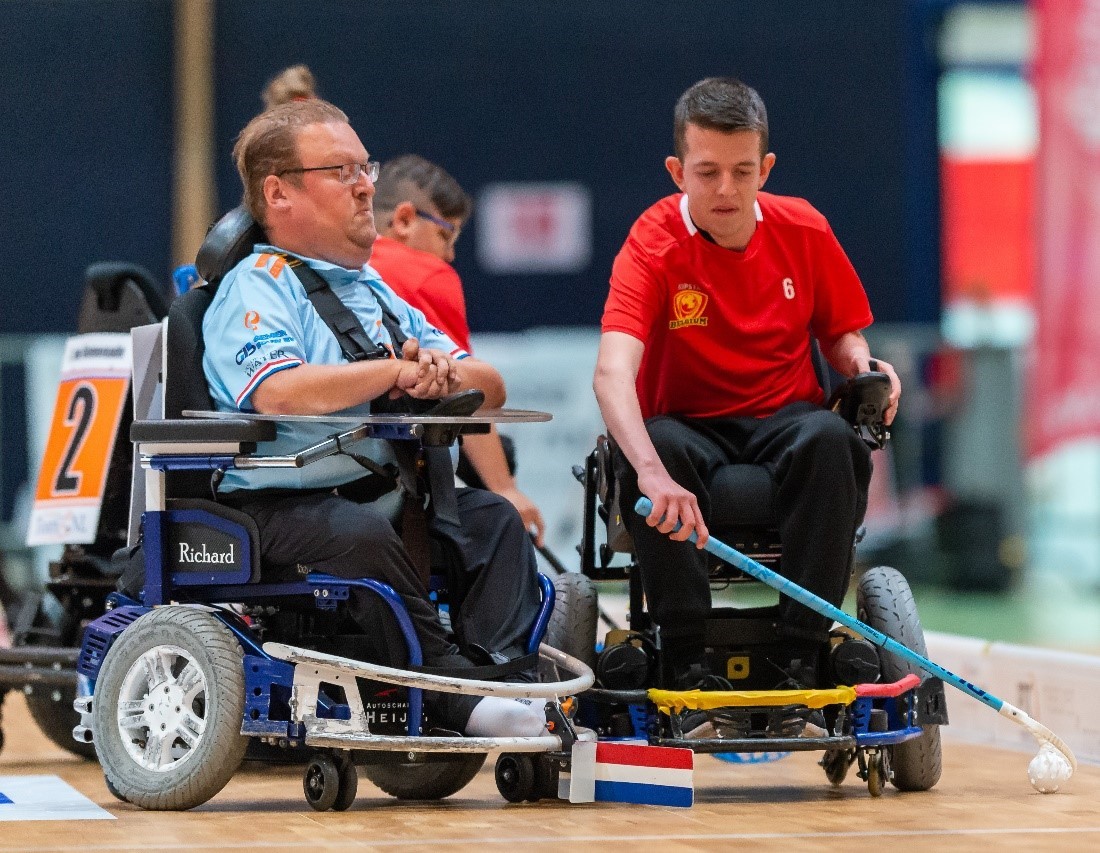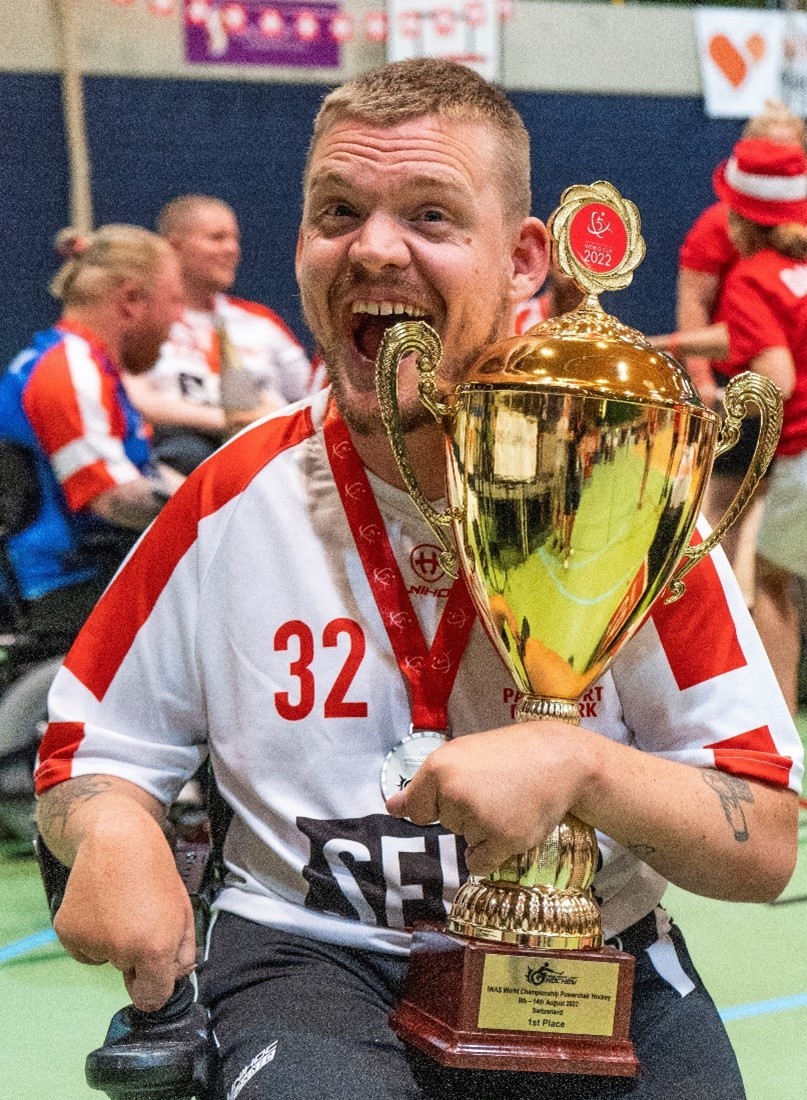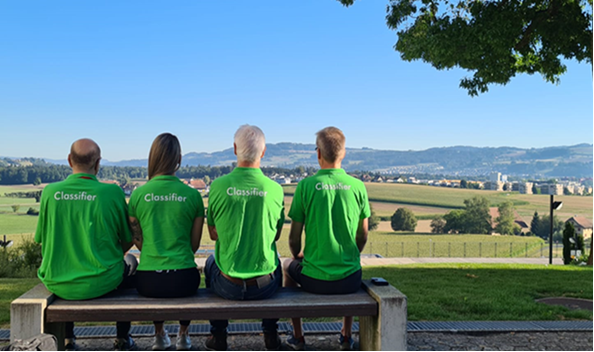
Savonia Article: From rehabilitation to the top para sport – powerchair hockey
#SavoniaUAS
Powerchair hockey is a team play and where every player uses the electric wheelchair to move. Earlier its name was electric wheelchair hockey. The start of powerchair hockey was in rehabilita-tion. Some young guys with muscle dystrophy and using electric wheelchair started to play hock-ey in a school for disabled pupils. It was easy to handle light sticks and move with the electric wheelchair, and specific schools started giving sport lessons for those pupils. So, the powerchair hockey was born, by accident. (Powerchair hockey 2022)
Nowadays the rules and minimum impairment criteria of powerchair hockey are so tight that only the players with lowest physical ability/capacity are eligible to play. The aim is to able them to engage in competitive sports by keeping the rule strict. If someone has more physical abil-ity/capacity, he/she must choose other sport.
Most of the players still have some kind on muscle dystrophy: they use electric wheelchair, and they need help in normal active daily living from other peoples, for example to move from the chair to bed or help in dressing or washing. So, their physical ability is rather low. But they can play powerchair hockey!
The wheelchairs are normal or especially designed for that sport. In the game speed of the wheelchair is limited max 15 km/h. Players use normal or adapted joysticks to drive wheelchair. Players use normal floorball sticks or so-called t-sticks to hit the ball. The T-stick is made of syn-thetic, non-transparent material and shall be attached to the front of the powerchair. If you look the t-stick above, it looks like a T-letter. Some of the players have so little power and physical ca-pacity in his/her arms and fingers that he/she can´t hold normal stick, so only possibility to play is to use t-stick. If you use the T-stick, you can hit the ball only by moving your wheelchair.

Classification in powerchair hockey
The big part of Powerchair hockey and in other Parasport is classification. And purpose of classifi-cation is, by IPCH Classification Manual (2020):
“Classification is necessary to establish eligibility to compete in this sport and to group together in a transparent, regular, and fair way those athletes who have eligible physical impairments that are approximately equal in the loss of movement potential, particularly in playing Powerchair Hockey, ensuring that teams can compete in an equal and fair way. The classification procedure is aimed to ensure a fair and equal competition, where the outcomes of the games are as much as possible related to trainings and personal abilities and talents rather than to the impact of im-pairments.”
Classification process has three distinct parts. First all players must have an Eligible Impairment that complies with the relevant Minimum Impairment Criteria for that sport.
Secondly, there is the Evaluation session in the competition. In this part the classification panel make all necessary and demanding tests and measurements that they could evaluate player`s physical capacity and impact of impairments. Usually, we´ll check player´s muscle power of the body and the upper limbs, range of movements in the body and the limbs´ joint, coordination of the body and the limbs or length of the body and the limbs.
And after that panel gives preliminary Sport class to each player. The Sport Class could be from 0,5 to 4,5 point by every half points. Less points mean lower capacity and 4,5 point means that player´s capacity in this sport is in a higher class. It´s good to remember that there could be only twelve points and five players by the team at the same time on the field (average 2,4 points/player).
Last part of classification is the observation in Competition, where we check that Sport class is validity also in the field.
Classification is all the time group work. Usually there are two panels in competition and each panel has at least two official classifiers. They are normally either physio therapist, or technical assistant or physicians or former player, who are interest and educated to be a classifier. Mostly there are three classifiers in one panel, two physio therapist and one technical assistant.
I have been the international classifier in Powerchair hockey since 2014, when I was first time in World Championships in Munich in a classifier course. My first contact to the sport was in early ´90 when one of my clients played powerchair hockey in a local team. I was his physiotherapist and we discussed, of course, during the therapy about his hobby.
I have been as a classifier in many international competitions after that. The last one was in Au-gust 2022 in Switzerland in World Championship.
Some of my thoughts on rehabilitation and parasport
I have thought often where is the border between rehabilitation and sport in this case, or is there any border? I don´t know! First, the player must have most of his/her life´s part in good balance, in his/her health, interest and motivation for sport, and he/she needs good aids, at least two wheelchairs, one for normal life and another for the sport and so. Maybe he/she needs the per-sonal assistant who helps him/her also in the journeys. And in some case, he/she need good economics, some players pay all the cost to participate for WC, for example the airplane tickets from Australia to Europe and back.
The players’ rehabilitation process should be well taken care of, and necessary actions has been done. The sport will help disabled people to integrate to the society or to be part of it. And this is the purpose and the aim of the rehabilitation.
Being classifier in powerchair hockey is one of my hobbies. Sometimes it takes lot of time. For ex-ample, I spent 10 days, full of duties, in Switzerland, including two travelling days. I used part of my holidays for this sport. Is it worth of it? I´ll try to answer.
I am a physiotherapist by basic education. In my normal duty as rehabilitation specialist, I don´t do as a clinical job with my clients. In Powerchair hockey I can use my skills of physiotherapy when we do classification. So, to be a classifier is like a job, but it is still my hobby, so it´s in “a grey area” between job and hobby.
By this hobby, I have seen many countries and many separate places on journeys for parasport, and many of them would have gone unseen without these participations. And of course, I have many friends from this sport, and I have met lot of people from many different countries. And it´s nice to see that people are the same regardless of their origin, nationally or race and so on.
The classification is also important part of the parasport. I think, I´ll enable players to participate in competitions. It´s nice to see how players with so many limitations of functional capacity can play something so elevated level as in World Championships.

We made excellent job in Switzerland in WC. The deciding matches were very evenly matched. Both the bronze match and the final ended in a draw in actual game time and in both matches ex-tra time was needed to decide the winner. Classification was done well because the teams was so equal. We got exceptionally honest feedback on the classification from Danish team`s coach. His comment was in public chat channel which had been opened for the WC:
“I´m sitting in Switzerland and our 9 classifications has been the best experience I/we have had at any tournament. they take their time, do their job and explain EVERYTHING to the players.”
Our classification team could be proud of his comment.

Author:
Hannu Kapanen
Student, Master of Health Care
Physiotherapist
International classifier for Powerchair hockey and Parahockey
Photo: Reinthaler Bern, 2014, IPC 2022
References:
IPCH Classification Manual (2020) Online publication. Powerhairhockey.org. http://powercahairhockey.org/wp-content/uploads/2020/07/IPCH-Classification-Manual-2020.pdf/read 17.10.2022
Powerchair hockey (2022). Online publication. Powerhairhockey.org. http://powerchairhockey.org/whatispch/history/read 17.10.2022